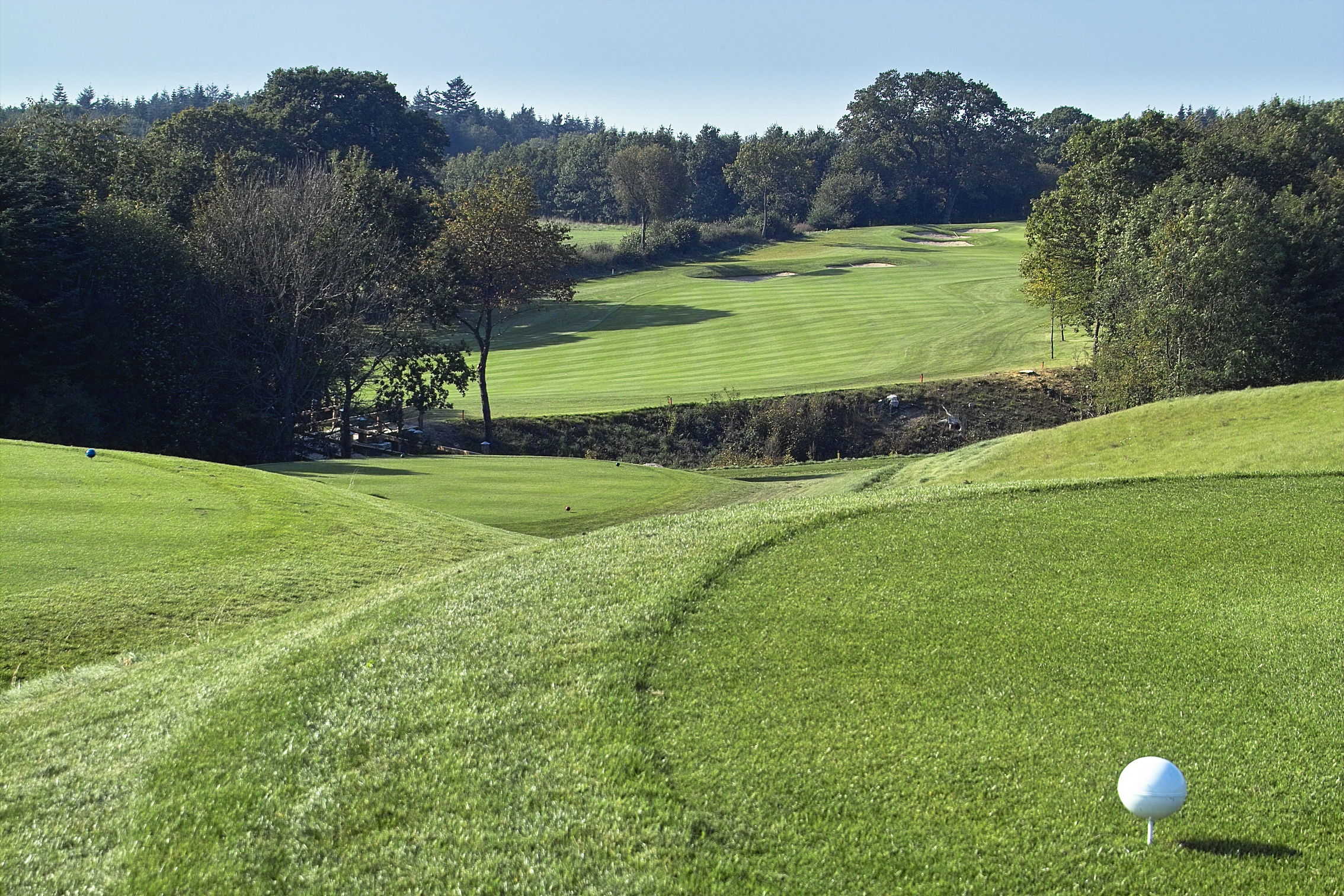Many times, my students talk to me about their inability to score well on the course. They feel like they strike the ball on the range at a level that would suggest low scores. I take this opportunity to point out the differences between tour pros and everyone else.
Tour pros are willing to assess a situation and make the correct decision, based on all of the given circumstances. For instance, in terms of the short game, the pros, the most talented players on the planet, select a club and shot that seems easy to them. They don’t want to use their considerable talent playing hard shots. Instead, they try to play a shot that they are likely to execute 98% of the time.
When chipping up a hill, the most accomplished short game players will select a club that allows them to use a small swing and promotes a consistent roll up the slope. Younger players will grab a lofted club that is designed to spin and stop quickly, a club that fights their intent.
I put my students through a progression drill. We stand about 10 yards off of the green and pitch to a flag that is 15 yards on the green and up a hill slightly (25 total yards). We begin with a 9-iron. I explain to them that their used to be a “starter” set of clubs that had 3-,5-,7-,and 9-irons only in them; no wedges of any kind. You had to figure out ways to make the 9-iron work. I ask them to open the face slightly with the 9-iron and pitch the ball to the flag. It is important to keep the hands soft and your swing smooth. They soon see that the 9-iron is easy to play the shot with. It flies and bites consistently and rolls to the flag in a dependable manner.
Next comes the pitching wedge. They are surprised that the swing that made the 9-iron soft now makes the wedge much softer than normal. The same continues to happen as we progress through the wedges to the most-lofted clubs. This drill takes the violence and unnecessary speed out of our wedge action.
My players also see that more loft does NOT necessarily make the shot easier. I explain to them that, as talented players, one of the worst things they can do to themselves is to be one-dimensional. I want my players to look at a shot and know they have four or five clubs in their bag that they could get close to the hole. Advanced understanding of trajectory and spin makes picking landing spots much easier. I need their eyes, and mind, to be wide open.
I know of at least one major college golf program that charts proximity to the hole on a short shot like this. I ask my students to picture a person standing by the hole with a clipboard. They are charting the proximity to the hole of every shot and are going to give you an average distance, away from the hole, for each club. Now, logic should tell you to take the club that gives you the best average result. That is the smartest shot.
Does the normal student take heed? NO. I know of an instance where a college golf coach took a player out of the starting lineup because he wouldn’t choose the club that was in his best interest. He continued to select shots that were too hard when a simpler option was available.
I put a young student through this exercise and was careful to point out the results. From 25 yards, as I described, he was best with the 9-iron. The pitching wedge and gap wedge were progressively worse. The sand wedge was nearly as good as the 9-iron. The lob wedge was not even used. He said to me, “See, the sand wedge IS the best club.” I replied, “Wait a minute. You hit that sand wedge on EVERY shot under 100 yards. It gets all of your focus. Day after day it is in your hands. You hit the 9-iron for 10 minutes and it performs as well, if not better. Doesn’t that tell you something?”
Good shotmaking, where balls end up next to the hole, is many times the result of good decision making.
Maturity as a player looks like this: You are willing to work on many shots. You become adept at seeing the best shot to play in each situation. Then, you are willing to play the shot with the best club available. You want to use your considerable talent to play a shot that seems easy to you and which you will hardly ever mis-hit.
When we understand that our “go-to club” is any club in the bag that simplifies the shot, we have come a long way on our journey to lower scoring. The best players SEE the right shot, PLAY the right shot and USE THE RIGHT CLUB. That is the formula for “taking it to the course.”
Copyright © 2023 United States Golf Teachers Federation, All Rights Reserved
200 S. Indian River Drive, Suite #206, Fort Pierce, FL 34950
772-88-USGTF or 772-595-6490 - www.usgtf.com
200 S. Indian River Drive, Suite #206, Fort Pierce, FL 34950
772-88-USGTF or 772-595-6490 - www.usgtf.com

